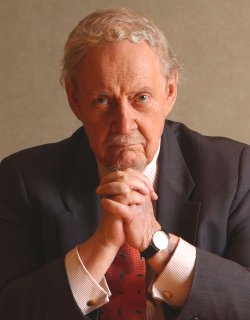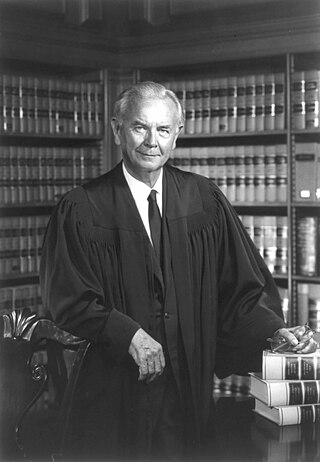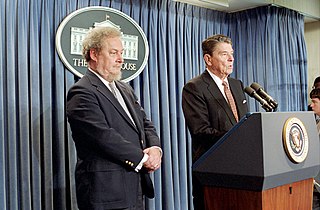
Earl Warren was an American lawyer, politician, and jurist who served as the 30th governor of California from 1943 to 1953 and as the 14th Chief Justice of the United States from 1953 to 1969. The Warren Court presided over a major shift in American constitutional jurisprudence, which has been recognized by many as a "Constitutional Revolution" in the liberal direction, with Warren writing the majority opinions in landmark cases such as Brown v. Board of Education (1954), Reynolds v. Sims (1964), Miranda v. Arizona (1966), and Loving v. Virginia (1967). Warren also led the Warren Commission, a presidential commission that investigated the 1963 assassination of President John F. Kennedy. He served as Governor of California from 1943 to 1953, and is the last chief justice to have served in an elected office before nomination to the Supreme Court. Warren is generally considered to be one of the most influential Supreme Court justices and political leaders in the history of the United States.

Robert Heron Bork was an American legal scholar who served as solicitor general of the United States from 1973 until 1977. A professor by training, he was acting United States Attorney General and a judge on the U.S. Court of Appeals for the D.C. Circuit from 1982 to 1988. In 1987, President Ronald Reagan nominated Bork to the U.S. Supreme Court, but the Senate rejected his nomination after a contentious and highly publicized confirmation hearing.

Abraham Fortas was an American lawyer and jurist who served as an associate justice of the Supreme Court of the United States from 1965 to 1969. Born and raised in Memphis, Tennessee, Fortas graduated from Rhodes College and Yale Law School. He later became a law professor at Yale Law School and then an advisor for the U.S. Securities and Exchange Commission. Fortas worked at the Department of the Interior under President Franklin D. Roosevelt, and was appointed by President Harry S. Truman to delegations that helped set up the United Nations in 1945.

Warren Earl Burger was an American attorney and jurist who served as the 15th chief justice of the United States from 1969 to 1986. Born in Saint Paul, Minnesota, Burger graduated from the St. Paul College of Law in 1931. He helped secure the Minnesota delegation's support for Dwight D. Eisenhower at the 1952 Republican National Convention. After Eisenhower won the 1952 presidential election, he appointed Burger to the position of Assistant Attorney General in charge of the Civil Division. In 1956, Eisenhower appointed Burger to the United States Court of Appeals for the District of Columbia Circuit. Burger served on this court until 1969 and became known as a critic of the Warren Court.

The Supreme Court of the United States is the highest-ranking judicial body in the United States. Established by Article III of the Constitution, the detailed structure of the court was laid down by the 1st United States Congress in 1789. Congress specified the Court's original and appellate jurisdiction, created 13 judicial districts, and fixed the initial size of the Supreme Court. The number of justices on the Supreme Court changed six times before settling at the present total of nine in 1869. As of June 2022, a total of 116 justices have served on the Supreme Court since 1789. Justices have life tenure, and so they serve until they die in office, resign or retire, or are impeached and removed from office.

United States v. Nixon, 418 U.S. 683 (1974), was a landmark decision of the Supreme Court of the United States in which the Court unanimously ordered President Richard Nixon to deliver tape recordings and other subpoenaed materials related to the Watergate scandal to a federal district court. Decided on July 24, 1974, the ruling was important to the late stages of the Watergate scandal, amidst an ongoing process to impeach Richard Nixon. United States v. Nixon is considered a crucial precedent limiting the power of any U.S. president to claim executive privilege.

Harry Andrew Blackmun was an American lawyer and jurist who served as an associate justice of the Supreme Court of the United States from 1970 to 1994. Appointed by President Richard Nixon, Blackmun ultimately became one of the most liberal justices on the Court. He is best known as the author of the Court's opinion in Roe v. Wade.

William Joseph Brennan Jr. was an American lawyer and jurist who served as an Associate Justice of the Supreme Court of the United States from 1956 to 1990. He was the seventh-longest serving justice in Supreme Court history, and was known for being a leader of the Court's liberal wing.

The Warren Court was the period in the history of the Supreme Court of the United States from 1953 to 1969 when Earl Warren served as the chief justice. The Warren Court is often considered the most liberal court in U.S. history.

The Supreme Court of the United States is the only court specifically established by the Constitution of the United States, implemented in 1789; under the Judiciary Act of 1789, the Court was to be composed of six members—though the number of justices has been nine for most of its history, this number is set by Congress, not the Constitution. The court convened for the first time on February 2, 1790.

The Brethren: Inside the Supreme Court is a 1979 book by Bob Woodward and Scott Armstrong. It gives a "behind-the-scenes" account of the United States Supreme Court during Warren Burger's early years as Chief Justice of the United States. The book covers the years from the 1969 term through the 1975 term. Using Woodward's trademark writing technique involving "off-the-record" sources, the book provides an account of the deliberations leading to some of the court's more controversial decisions from the 1970s. The book significantly focused on the Supreme Court's unanimous 1974 decision in United States v. Nixon, which ruled that President Richard Nixon was legally obligated to turn over the Watergate tapes. In 1985, upon the death of Associate Justice Potter Stewart, Woodward disclosed that Stewart had been the primary source for The Brethren.

The Rehnquist Court was the period in the history of the Supreme Court of the United States during which William Rehnquist served as Chief Justice. Rehnquist succeeded Warren Burger as Chief Justice after the latter's retirement, and Rehnquist held this position until his death in 2005, at which point John Roberts was nominated and confirmed as Rehnquist's replacement. The Rehnquist Court is generally considered to be more conservative than the preceding Burger Court, but not as conservative as the succeeding Roberts Court. According to Jeffrey Rosen, Rehnquist combined an amiable nature with great organizational skill, and he "led a Court that put the brakes on some of the excesses of the Earl Warren era while keeping pace with the sentiments of a majority of the country."

Adam Seth Cohen is an American journalist, author, lawyer, and former assistant editorial page editor of The New York Times. He also worked in the administration of New York City Mayor Bill de Blasio.

On July 1, 1987, President Ronald Reagan nominated Judge Robert Bork for Associate Justice of the Supreme Court of the United States, to succeed Lewis F. Powell Jr., who had earlier announced his retirement. At the time of his nomination, Bork was a judge on the United States Court of Appeals for the District of Columbia Circuit, a position to which he had been appointed by President Reagan in 1982.

William Hubbs Rehnquist was an American attorney and jurist who served on the U.S. Supreme Court for 33 years. Rehnquist was an associate justice from 1972 to 1986 and the 16th chief justice from 1986 until his death in 2005. Considered a staunch conservative, Rehnquist favored a conception of federalism that emphasized the Tenth Amendment's reservation of powers to the states. Under this view of federalism, the Court, for the first time since the 1930s, struck down an act of Congress as exceeding its power under the Commerce Clause.
During President Richard Nixon's presidency, federal judicial appointments played a central role. Nixon appointed four individuals to the Supreme Court of the United States in just over five and a half years.
During President Lyndon B. Johnson's presidency, federal judicial appointments played a central role. Johnson appointed Abe Fortas and Thurgood Marshall to the Supreme Court of the United States in just over five years as president.
Speculation abounded over potential nominations to the Supreme Court of the United States by Ronald Reagan even before his presidency officially began, due to the advanced ages of several justices, and Reagan's own highlighting of Supreme Court nominations as a campaign issue. Reagan had promised "to appoint only those opposed to abortion and the 'judicial activism' of the Warren and Burger Courts". Conversely, some opposed to Reagan argued that he could "appoint as many as five Justices" and would "use the opportunity to stack the Court against women, minorities and social justice".
President Richard Nixon entered office in 1969 with Chief Justice Earl Warren having announced his retirement from the Supreme Court of the United States the previous year. Nixon appointed Warren E. Burger to replace Earl Warren, and during his time in office appointed three other members of the Supreme Court: Associate Justices Harry Blackmun, Lewis F. Powell, and William Rehnquist. Nixon also nominated Clement Haynsworth and G. Harrold Carswell for the vacancy that was ultimately filled by Blackmun, but the nominations were rejected by the United States Senate. Nixon's failed Supreme Court nominations were the first since Herbert Hoover's nomination of John J. Parker was rejected by the Senate.

The Supreme Court of the United States is the country's highest federal court. The Court has ultimate—and largely discretionary—appellate jurisdiction over all federal courts and state court cases involving issues of U.S. federal law, plus original jurisdiction over a small range of cases.























